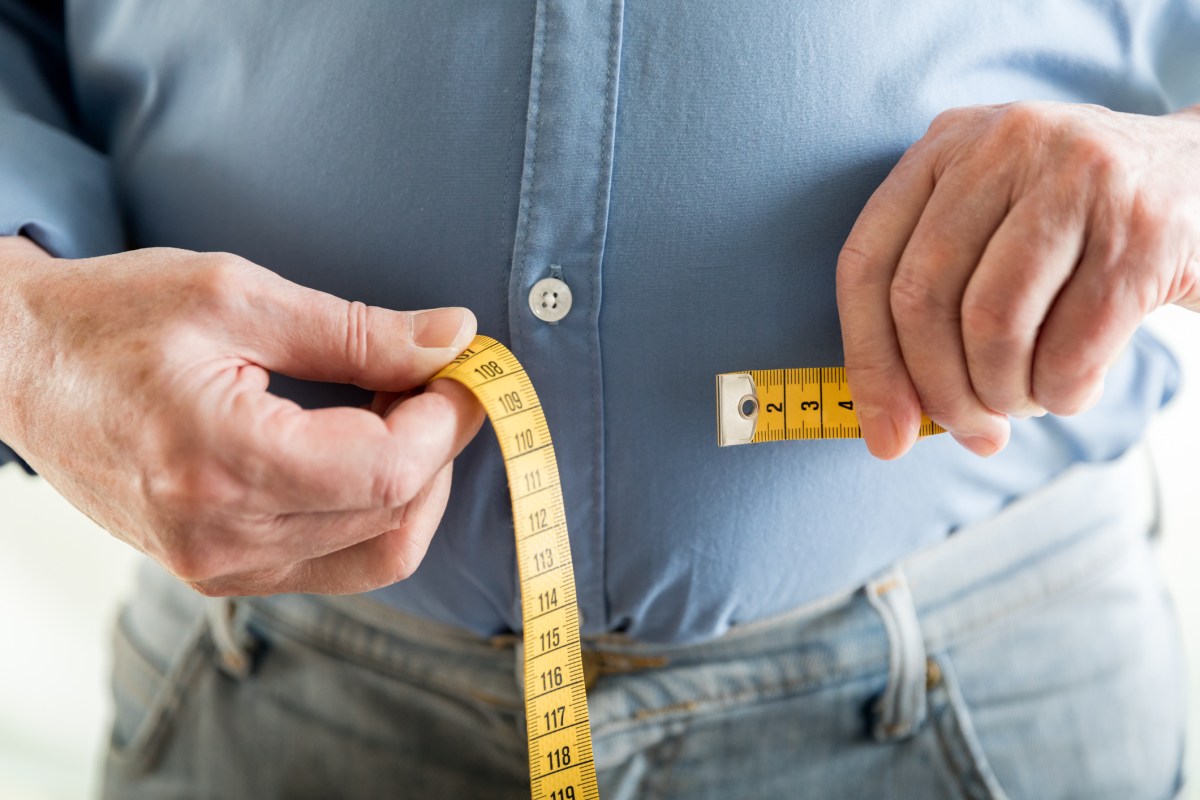Belly fat is no mere cosmetic concern.
Men with belly fat — what some affectionately call the “dad bod” — may see their growing stomachs as a chiefly cosmetic concern that affects their appearance but not their overall health. But researchers are learning a lot about belly fat, including just how dangerous it can be.
According to a recent study published in the Journal of the American College of Cardiology, increasing stomach fat is associated with worsening heart disease risk factors, including high blood pressure. Research into fat and its connection to heart disease is ongoing, but evidence suggests that fat in the abdominal cavity is particularly dangerous.
Why is belly fat so dangerous? Belly fat does not include just subcutaneous fat, or the layer of padding just below the skin. One of the biggest threats posed by belly fat is that it also includes visceral fat that surrounds the internal organs. Harvard Medical School notes that visceral fat lies deep inside the abdominal cavity, padding the space between a person’s abdominal organs. This type of fat has been linked to metabolic disturbances and increased risk for cardiovascular disease and type 2 diabetes.
What contributes to belly fat? The term “beer belly” might suggest that only men who drink excessive amounts of beer are at risk of developing unhealthy amounts of belly fat. While drinking too much beer is unhealthy and will result in more belly fat, beer is not the only culprit.
The Mayo Clinic notes that aging can play a role in the development of belly fat. People, especially those who are not physically active, naturally lose muscle after the age of 30. That loss of muscle mass decreases the rate at which the body uses calories, which can make it more difficult to maintain healthy weights and prevent belly fat from developing. That’s one reason why the Office of Disease Prevention and Health Promotion advises men in their 50s to consume roughly 200 fewer calories per day than they did when they were in their 30s.
A poor diet also can contribute to belly fat. When choosing protein sources, men should forgo red meat, which can be high in saturated fat, in favor of fish and low-fat dairy products. Harvard Medical School notes that other healthful sources of protein include chicken, turkey, nuts, beans, and whole grains.
But even the healthiest diets won’t do much to reduce or prevent belly fat if men also don’t control their portion sizes. When dining out, men can share plates or decide in advance to eat half their meals and take the rest home. When eating at home, men should not feel obligated to fill or empty their plates. Feeling full or uncomfortable after eating is indicative of overeating. Avoid that feeling and cut down on belly fat by eating healthy portions of healthy foods.
How is belly size determined? Men concerned about belly fat can measure their bellies and discuss belly size with their physicians. The Mayo Clinic offers the following guidelines to measure belly size:
-
Stand and place a tape measure around your bare stomach, just above your hip bone.
-
Pull the tape measure until it fits snugly around you, but doesn’t push into your skin. Make sure the tape measure is level all the way around.
-
Relax, exhale and measure your waist. Do not suck in your stomach.
-
A waist measurement greater than 40 inches indicates an unhealthy amount of belly fat that can increase a man’s risk for heart disease.
-
Belly fat might mistakenly be viewed as a cosmetic concern, but the consequences of excess belly fat affect far more than a man’s appearance.
-Metro Creative Connection
Sign up for Long Island Press’ email newsletters here. Sign up for home delivery of Long Island Press here. Sign up for discounts by becoming a Long Island Press community partner here.

































